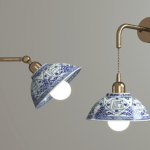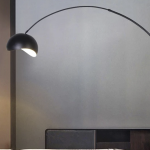
Introduction
LED lamps have become increasingly popular in recent years as an efficient and sustainable lighting solution. LED lamps have transformed the way we light our homes and offices, offering a cleaner, brighter, and more energy-efficient alternative to traditional lighting methods. With recent innovations in touch control technology, LED lamps have become even more versatile and advanced.
The Basics of LED Lamp Touch Control
LED lamp touch control is a type of lighting technology that allows users to adjust, dim, or turn on/off an LED lamp by touching its surface. This technology is based on capacitive sensing, which detects changes in the electric field when a person touches the surface of an object.
The capacitive sensing technology used in LED lamp touch control is similar to the technology used in touch screens on mobile phones and tablets. It works by detecting the slight electrical charge that is created when a finger or conductive material comes into contact with the surface of the lamp. The lamp then responds to the user’s touch by switching on, off, or adjusting its brightness.
The Benefits of LED Lamp Touch Control
There are several benefits to using LED lamp touch control technology in your home or office. Here are some of the most notable advantages:
Convenience
One of the most obvious benefits of LED lamp touch control is its convenience. With touch control, users can easily adjust the brightness or turn on/off a lamp without having to fumble for a switch. This means you don’t need to get out of bed to turn off a lamp, or walk across the room to dim the lights.
Customization
LED lamp touch control technology also allows for greater customization. Users can set different levels of brightness for different times of day, or for different activities, such as reading or watching TV. With touch control, you can easily switch between different settings without having to fiddle with buttons or switches.
Safety
Finally, LED lamp touch control can also be safer than traditional lighting methods. With no buttons to press or switches to flip, there is less risk of electrical shock or injury. Additionally, LED lamps are typically cooler to the touch than traditional lighting methods, meaning there is less risk of burns or fire.
Types of LED Lamp Touch Control
There are several different types of LED lamp touch control technology available on the market. Here are some of the most common types:
Single-touch control
Single-touch control is the simplest form of LED lamp touch control. It works by detecting a single touch, which turns the lamp on or off. This type of touch control is ideal for lamps that are only used for short periods of time, such as bedside or desk lamps.
Multi-touch control
Multi-touch control is a more advanced form of LED lamp touch control. It allows users to adjust the brightness of a lamp by sliding their finger up or down the surface of the lamp. Some lamps also allow users to swipe left or right to change the color temperature of the lamp. This type of touch control is ideal for lamps that are used for extended periods of time, such as living room or office lamps.
Voice control
Voice control is a new and emerging form of LED lamp touch control. It allows users to control their lamps using voice commands, such as “turn on the lamp” or “dim the lights.” This type of touch control is ideal for people with disabilities or mobility issues, as well as for those who want a hands-free lighting solution.






